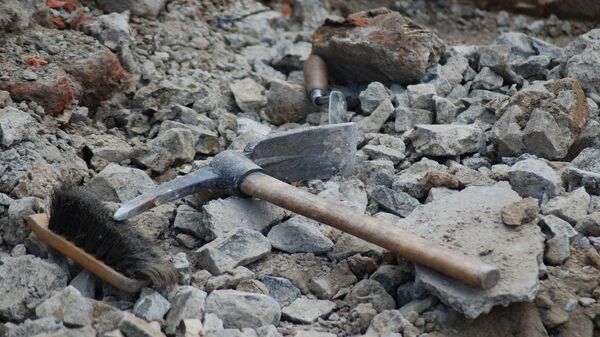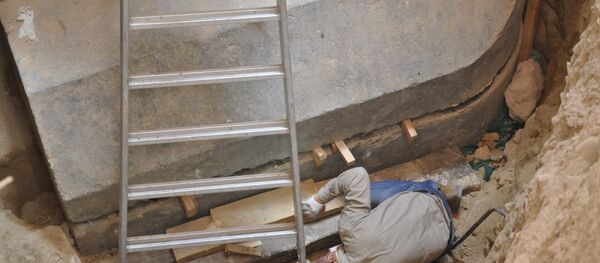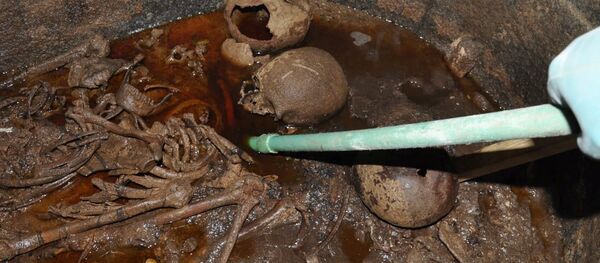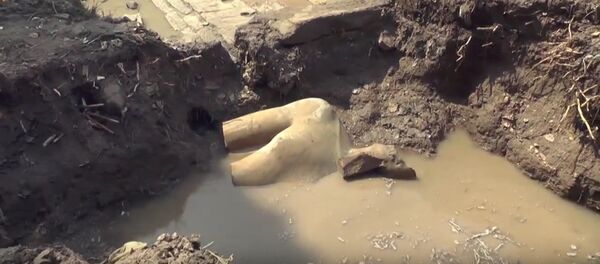It turns out that, for all our industrial advances, Bronze Age humans had fun in very similar ways to us. The game of 58 Holes has been found across the Ancient Near East, from Egypt to Azerbaijan. The latest find is a board of the game carved into a rock face in Azerbaijan's Gobustan National Park, near the Caspian Sea coast.
Gobustan National Park is a UNESCO World Heritage Site, with rock drawings and carvings dated to roughly 4,000 years ago, when the region was populated by nomadic cattle herders.
Walter Crist, a research associate with the American Museum of Natural History in New York, told Live Science that when he laid eyes on the find in a magazine photo, he immediately knew what it was and flew to Baku to see it for himself.
"There is no doubt in my mind — the [game was] played for about 1,500 years, and very regular in the way that it's laid out," he said, noting that it was probably played similarly to backgammon, with players moving counters — probably seeds or stones — around the board until a goal was reached.
"It is two rows in the middle and holes that arch around outside, and it's always the fifth, 10th, 15th and 20th holes that are marked in some way," Crist said. "And the hole on the top is a little bit larger than the other ones, and that's usually what people think of as the goal or the endpoint of the game."
a board game played by asian herders like 4000 years ago, dubbed 58 holes pic.twitter.com/Qa4KGPsaj9
— Fadi Qassis (@fadiqassis) December 10, 2018
The game is also called "Hounds and Jackals" by archeologists because of the pieces carved in the shapes of those animals in versions of the game found in Egypt. The game has been found in the tomb of the Egyptian Pharaoh Amenemhat IV, who lived in the 18th century BC, in the city of Thebes, as well as other Pharaohs.

Board games seem to have been popular across the Ancient Near East. Other known games include Senet and Mehen, the elaborately carved game boards and boxes of which have also been found in Egyptian temples and Mesopotamian burial grounds. Little is known about Mehen, but Senet is similar to 58 Holes.

However, 58 Holes isn't the oldest game we know of. The Royal Game of Ur is slightly older. Rediscovered in the Sumerian city of Ur in modern-day Iraq, the game is a kind of two-player race game, as are 58 Holes and backgammon, and has been found as far away as Sri Lanka and Crete, according to the British Museum.
"People are using the games to interact with one another," Crist noted. Games were "kind of a uniquely human thing, kind of an abstraction — moving stones in blank spaces on the ground has no real effect on your daily life, except for the fact that it helps you interact with another person.
"So, a game is a tool for interaction, kind of like language — a shared way of being able to interact with people."




